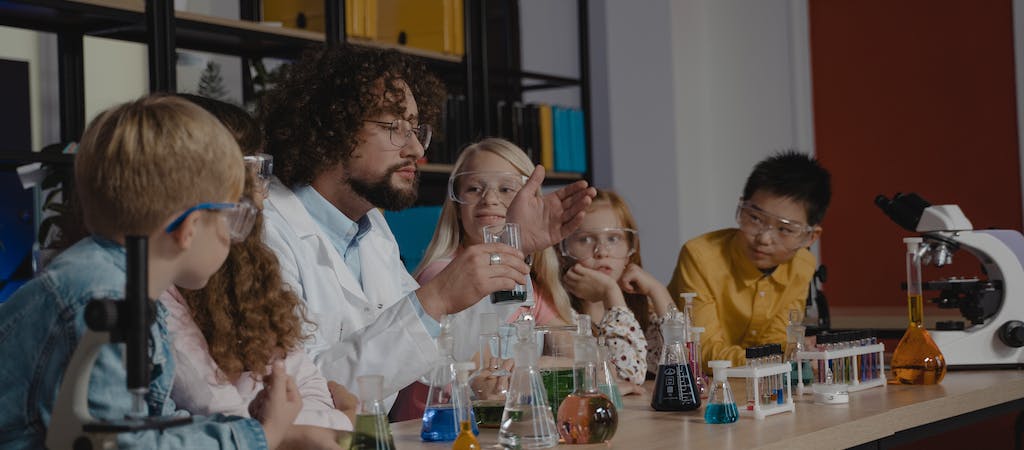
Choosing Your School’s Laboratory Equipment Wisely: 6 Top Tips
To explore the wonders of learning through discovery and experimentation, visit ulabspt.com for valuable insights into optimizing school laboratories. They are where theories come to life and form the foundation of critical scientific learning. The right laboratory equipment can inspire curiosity, drive innovation, and foster a deep love of science among students. However, choosing the right equipment for your school laboratory can feel like a daunting task; there’s an overwhelming array of choices, each promising to be better than the last. But fear not, we’re here to demystify the process and guide you through selecting the perfect equipment for your lab. Get ready to venture into the exciting world of scientific tools and apparatus, as we delve into our top six tips on how to choose your school laboratory equipment wisely.
1. Understand Your Curriculum Needs
Always start by fully comprehending the curriculum requirements. The equipment you choose should align with the subjects being taught and the experiments that will be conducted. Consult with teachers and get a clear understanding of the specific experiments students will perform in the lab. This will help you determine what type of equipment is necessary, as well as the quantity needed. For example, some science lab equipment may only be needed for certain experiments and not others. Knowing this information will help you avoid purchasing unnecessary equipment and ensure that your lab is fully equipped to meet curriculum standards.
2. Prioritize Safety
Equip your laboratory with safe, reliable tools. Look for equipment with safety certifications and ensure it meets all necessary safety standards. Students’ safety should always be a top priority, and investing in high-quality equipment can prevent accidents and injuries. Additionally, consider the age group of your students when choosing equipment. Younger students may require simpler, more basic tools, while older students may need more specialized equipment. A great idea is to involve students in the safety evaluation process and encourage them to voice any concerns or suggestions. Moreover, provide proper training and guidelines on how to use the equipment safely to both students and teachers.
3. Consider Quality Over Price
While budget constraints may be a reality, it’s crucial to prioritize quality. High-quality equipment will last longer, provide accurate results, and reduce the chances of mishaps. Cheap equipment may seem like a bargain, but it can end up costing you more in the long run due to frequent replacements and repairs. Do your research, read reviews, and invest in reputable brands that offer warranties and provide good customer service. If budget is a concern, consider purchasing slightly used equipment from trusted sellers or renting it for specific experiments. For instance, you may only need expensive equipment for a few experiments, making renting a more cost-effective option.
4. Assess Size and Space
The size of the equipment should be compatible with the available space in your laboratory. Keep in mind to leave enough room for safe movement and experimentation. It’s also essential to consider storage space for the equipment when not in use. Some experiments may require larger or more complex equipment, so plan accordingly. Furthermore, keep in mind that certain tools may require specific ventilation systems or power sources, which should also be factored into your decision. If space is limited, consider purchasing smaller or compact equipment that can still perform the desired functions.
5. Seek Professional Advice
Collaborate with science teachers or laboratory technicians to make informed decisions. Their expertise can provide valuable insights into what equipment is essential and beneficial for specific lessons or experiments. They can also help with maintenance and repairs, which can save you time and money. Additionally, attend conferences or workshops to stay updated on the latest laboratory equipment trends and innovations. Professionals will not only guide you in making the right choices but also help you keep up with advancements in scientific tools. When in doubt, always seek professional advice.
6. Future-proof Your Laboratory
Invest in equipment that can adapt to future curriculum changes and advancements in science. Versatile, modular equipment can be a wise choice in this regard. It can serve multiple purposes, allowing you to expand your experimentation options without having to purchase additional equipment. Moreover, consider the potential growth of your school and how that may affect your laboratory’s needs. Investing in flexible equipment can save you from costly upgrades or replacements down the line. For example, purchasing a microscope with interchangeable lenses can cater to a wide range of experiments and adapt as the curriculum evolves.
In conclusion, choosing school laboratory equipment requires careful consideration and planning. It involves understanding curriculum needs, prioritizing safety, and investing in quality tools that can adapt to changing requirements. Seek professional advice and involve students to ensure a well-equipped laboratory that promotes curiosity, innovation, and a love for science. With these top six tips in mind, you can confidently select the perfect equipment for your school laboratory and provide students with an enriching learning experience like no other.
Daily Newsletter
Subscribe to Jebiga for a dose of the best in gear, design, rides, tech and adventure.






